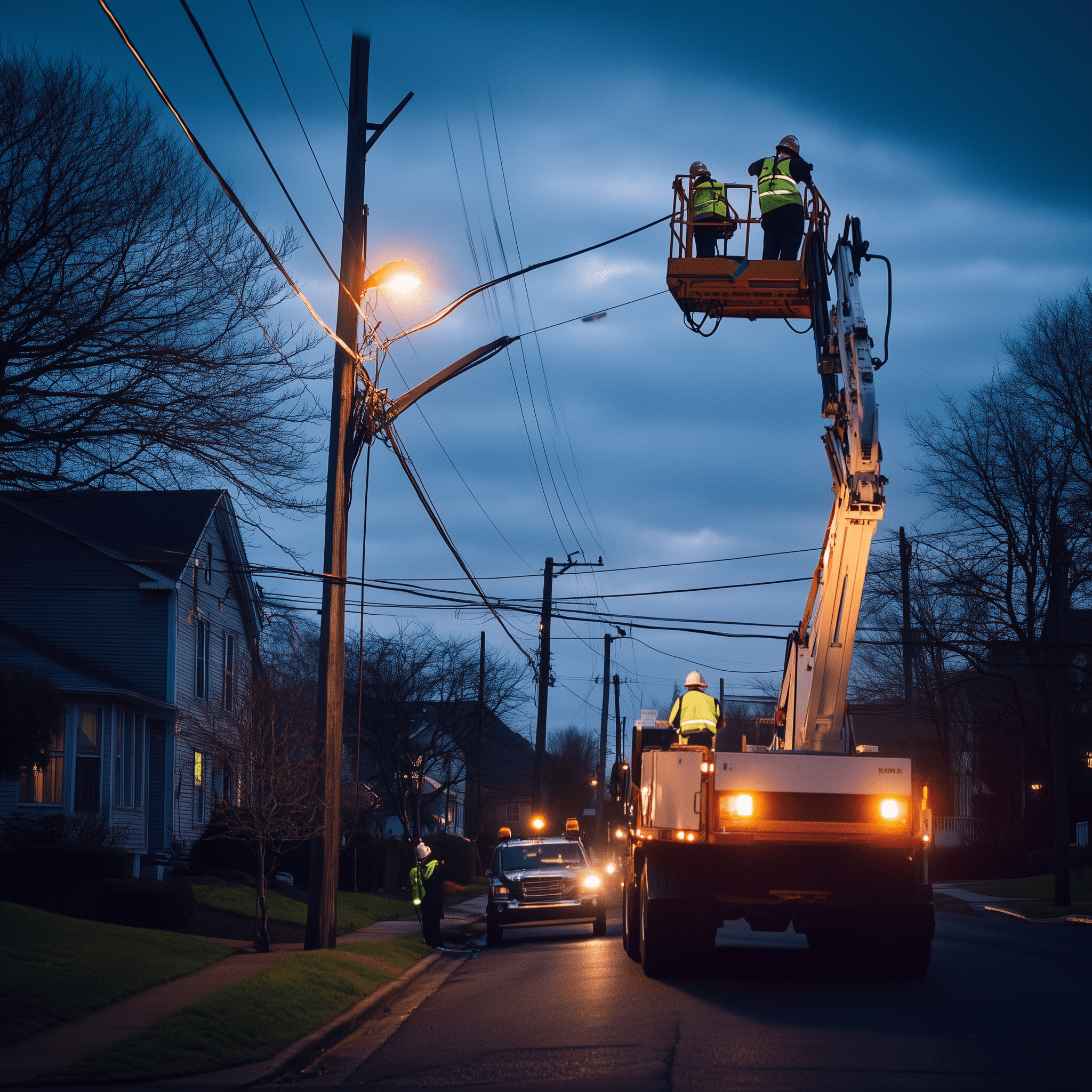Power Outage Guide: Causes & Safety Tips
WHAT CAUSES POWER OUTAGES?
Power outages can be more than just a minor inconvenience—they can disrupt your daily routine, impact your safety, and even lead to significant financial losses. Understanding the causes of power outages, how to prepare for them, and what to do when they occur can make a big difference in how you handle these unexpected situations. In this article, we'll explore everything you need to know about power outages and provide actionable tips to ensure you're always ready.
Severe Weather Conditions
Storms, hurricanes, and heavy snowfall are some of the leading causes of power outages. High winds can topple trees onto power lines, while lightning strikes can cause electrical surges that damage infrastructure.Equipment Failure
Aging infrastructure or faulty equipment can lead to unexpected power outages. This is especially common in areas where the electrical grid has not been updated in many years.Animal Interference
Believe it or not, animals such as squirrels and birds can cause significant power disruptions. When they come into contact with transformers or power lines, they can trigger outages that may affect entire neighborhoods.Human Error and Accidents
Construction activities, car accidents, or even simple human error can lead to power outages. For example, digging in the wrong place can damage underground power lines, while accidents involving power poles can knock out electricity.High Energy Demand
During extreme weather conditions, such as heatwaves, the demand for electricity can exceed supply, leading to rolling blackouts or power outages. Utility companies may deliberately cut power to prevent the grid from being overwhelmed.Planned Outages
Utility companies may schedule outages for maintenance or upgrades to the grid. These are usually communicated in advance, allowing you to prepare accordingly
HOW TO PREPARE FOR A POWER OUTAGE
Preparation is key to minimizing the impact of a power outage. Here are some essential steps to take before an outage occurs.
Create an Emergency Plan
Discuss with your family what to do in case of a power outage. Ensure everyone knows where to find flashlights, batteries, and other emergency supplies. Establish a meeting point if the outage occurs while family members are away from home.Assemble an Emergency Kit
An emergency kit should include the basics to get you through an outage safely and comfortably. Consider adding the following items:Flashlights and extra batteries
Battery-powered or hand-crank radio
First aid kit
Non-perishable food and bottled water (enough for at least three days)
Manual can opener
Warm clothing and blankets
Personal hygiene items
Copies of important documents (in a waterproof container)
Cash, as ATMs may not work during an outage
Invest in a Backup Power Source
If you live in an area prone to outages, consider investing in a generator. Make sure to use it safely and keep it well-maintained. Solar-powered chargers for your phone and other devices are also a good idea.Protect Your Electronics
Use surge protectors to safeguard your electronics from power surges when the electricity is restored. Unplug sensitive devices like computers, televisions, and gaming consoles during an outage.Stay Informed
Sign up for alerts from your local utility company to receive updates on outages in your area. Having a battery-powered or hand-crank radio will also allow you to stay informed about the situation.
EMERGENCY KITS FOR POWER OUTAGES
An emergency kit is essential for handling power outages effectively. Here’s a more detailed look at what you should include:
Lighting and Communication
Flashlights: LED flashlights are energy-efficient and long-lasting.
Extra Batteries: Stock up on the sizes your devices require.
Battery-Powered or Hand-Crank Radio: To stay updated on news and emergency broadcasts.
Portable Phone Charger: Solar or battery-operated chargers can keep your phone running.
Food and Water
Non-Perishable Food: Canned goods, energy bars, and dried fruits.
Water: At least one gallon per person per day, for a minimum of three days.
Manual Can Opener: Essential for opening canned foods.
Medical and Personal Supplies
First Aid Kit: Include bandages, antiseptic, and any prescription medications.
Personal Hygiene Items: Hand sanitizer, wet wipes, and toiletries.
Warm Clothing: Extra blankets, hats, and gloves for cold weather.
Tools and Safety Items
Multi-Tool or Swiss Army Knife: Handy for various tasks.
Duct Tape: Useful for temporary repairs.
Fire Extinguisher: Ensure it is up-to-date and accessible.
UNDERSTANDING YOUR UTILITY COMPANY’S ROLE
Utility companies play a critical role in restoring power during an outage. Understanding how they respond can help you manage your expectations and know when to take additional action.
Assessment and Repair
When an outage occurs, utility companies first assess the situation to identify the cause and scope. They prioritize repairs based on factors like the number of customers affected and the critical nature of the infrastructure involved.Communication
Most utility companies provide updates through their websites, social media, and automated phone systems. It’s important to stay informed about the status of repairs and any estimated time for power restoration.Customer Support
If you experience an extended outage, utility companies often provide resources such as bottled water, ice, or even temporary shelters. Contact your utility provider for information on available assistance.Reporting an Outage
Always report an outage to your utility company, even if you believe they are already aware. This ensures your specific issue is logged and addressed as part of their response efforts.
RESPONDING TO POWER OUTAGES: UTILITY WORKERS
Power outages are inevitable, but with the right preparation and knowledge, you can navigate them with confidence. From understanding the causes of outages to assembling a comprehensive emergency kit, these steps will help you stay safe and comfortable during any blackout.





